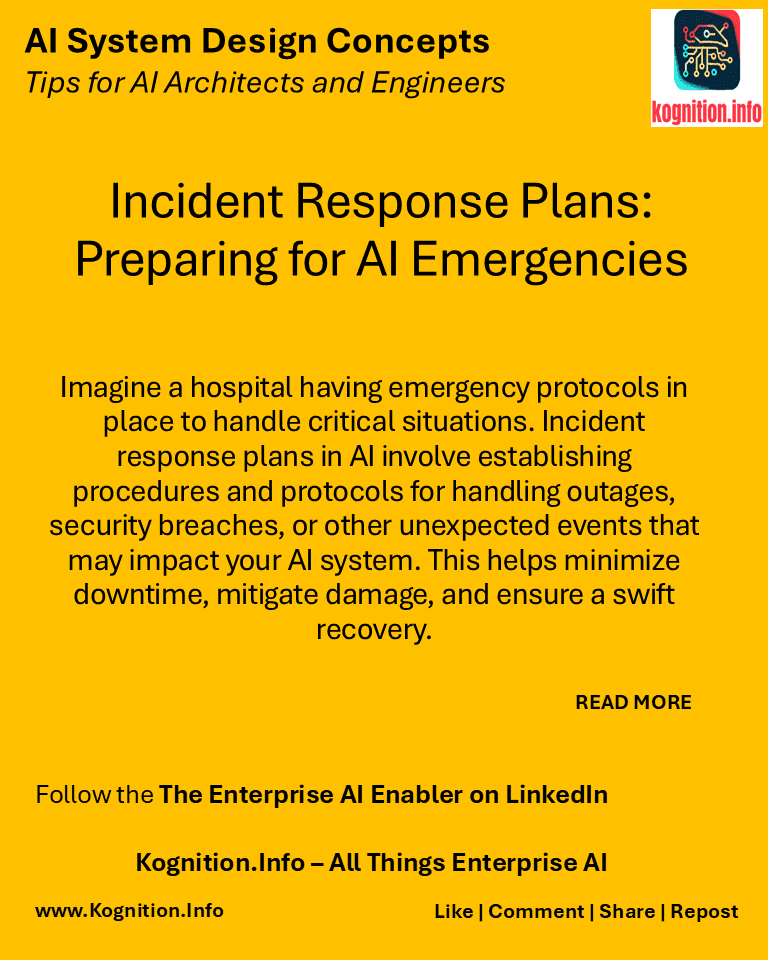
Imagine a hospital having emergency protocols in place to handle critical situations. Incident response plans in AI involve establishing procedures and protocols for handling outages, security breaches, or other unexpected events that may impact your AI system. This helps minimize downtime, mitigate damage, and ensure a swift recovery.
Use cases:
- Responding to model failures: Having a plan in place to quickly rollback to a previous model version or deploy a hotfix in case of model errors.
- Handling security breaches: Establishing procedures for identifying, containing, and recovering from security breaches that may compromise AI models or data.
- Dealing with infrastructure outages: Having a plan for switching to backup systems or cloud resources in case of hardware or network failures.
How?
- Identify potential risks: Assess potential risks and vulnerabilities in your AI system.
- Define roles and responsibilities: Clearly define roles and responsibilities for incident response.
- Establish communication channels: Set up communication channels for reporting and escalating incidents.
- Develop recovery procedures: Create detailed procedures for recovering from different types of incidents.
- Regularly test and update: Conduct regular drills and exercises to test and update the incident response plan.
Benefits:
- Reduced downtime: Minimize service disruption in case of emergencies.
- Improved recovery time: Enable faster recovery from incidents and minimize damage.
- Enhanced security: Strengthen the security posture of your AI system and protect against threats.
Potential pitfalls:
- Lack of planning: Failing to plan for incidents can lead to chaotic responses and increased damage.
- Outdated plans: Incident response plans need to be regularly updated to reflect changes in the AI system and threat landscape.
- Inadequate training: Team members need to be trained on the incident response plan to ensure effective execution.
